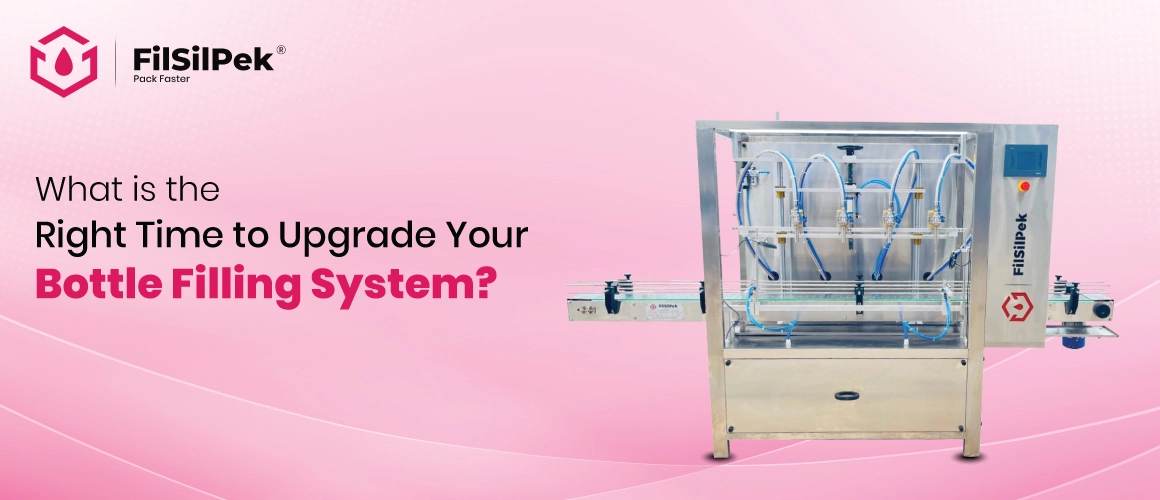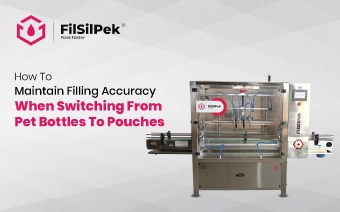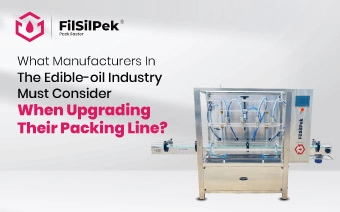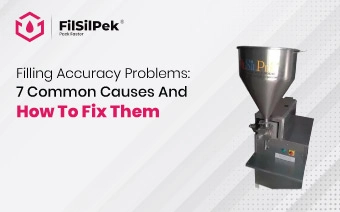What is the Right Time to Upgrade Your Bottle Filling System?
In food, cosmetics, and personal care manufacturing, the bottle filling system is often the heartbeat of the packaging line. When it runs smoothly, production moves efficiently, waste stays low, and product quality remains consistent. But over time, older or mismatched filling equipment can become a bottleneck slowing output, increasing errors, or failing to meet current hygiene and safety expectations.
Many manufacturers continue using legacy systems long after they’ve stopped delivering optimal performance. Signs like frequent breakdowns, inconsistent fill levels, long changeover times, or difficulty handling new product types are clear indicators that the system may no longer support your business goals. Upgrading isn’t just about replacing old hardware it’s about aligning your production capabilities with today’s market demands.
This article outlines practical signals that it’s time to consider a new filling system, and how a modern viscous filling solution like those from Filsilpek can address common operational gaps.
Common Signs Your Filling System Needs an Upgrade
- Fill weights vary noticeably between batches
- Downtime has increased due to mechanical failures or jams
- Cleaning or maintenance takes longer than it should
- The machine can’t handle new container shapes or sizes
- It lacks basic automation features like “no bottle, no fill”
- Product waste has gone up due to spills or overfills
- The system doesn’t meet current GMP or food safety standards
If two or more of these issues sound familiar, it may be more cost-effective to upgrade than to keep patching an outdated machine.
How a Modern Automated Filling System Solves Real Production Challenges
Today’s automated filling systems are designed to improve accuracy, reduce labor dependency, and support consistent output regardless of whether you’re filling water-thin liquids or thicker formulations. Unlike older semi-manual or basic mechanical fillers, modern automated lines integrate smart controls, reliable sensors, and modular components that adapt to changing production needs. This shift helps manufacturers meet tighter tolerances, comply with hygiene regulations, and respond faster to market demands.
An updated filling system directly addresses common bottlenecks in packaging operations. It minimizes human error, cuts product waste, and enables smoother integration with capping, labeling, and inspection equipment. For businesses scaling up or diversifying their product lines, automation isn’t just an upgrade it’s a strategic step toward sustainable, efficient production.
- Consistent Fill Accuracy
Automated systems use calibrated dosing mechanisms whether piston, pump, or volumetric to deliver precise fill volumes every cycle. This consistency ensures compliance with net weight regulations and reduces costly product giveaway. Over time, this accuracy protects brand reputation and supports fair trade practices. It also simplifies quality control checks and batch record-keeping. - Reduced Labor and Operator Fatigue
Automation decrease reliance on manual filling or constant operator monitoring. Staff can focus on supervision, quality checks, or other value-added tasks instead of repetitive pouring or adjustment of work. This not only lowers labor costs but also reduces the risk of errors caused by fatigue or distraction during long shifts. - Integrated “No Container, No Fill” Logic
Sensors detect the presence of a bottle or jar before dispensing begins. If no container is in position, the system skips the fill cycle preventing spills, saving product, and keeping the line clean. This feature is especially valuable when running small batches or switching between container types frequently. - Faster Changeovers Between Products
Modern fillers are built with tool-less or quick-adjust mechanisms for height, volume, and container width. This allows operators to switch between SKUs in minutes rather than hours. Reduced changeover time increases machine utilization and supports flexible production schedules key for co-packers or seasonal product lines. - Improved Hygiene and Compliance
Automated systems follow GMP (Good Manufacturing Practice) principles with smooth, cleanable surfaces and minimal product-contact dead zones. Stainless steel construction and enclosed designs reduce contamination risks. These features are essential for passing audits in food, cosmetics, and pharmaceutical environments. - Scalable Output for Growing Demand
Whether you need 1,000 or 5,000 bottles per hour, today’s automated fillers offer modular designs that can scale with your business. Some systems even allow adding extra heads or integrating with conveyors later. This future-proofing helps avoid full replacements as production volumes increase. - Lower Long-Term Operating Costs
While the initial investment may be higher than manual systems, automated fillers reduce waste, downtime, and rework over time. Energy-efficient motors, durable components, and predictive maintenance alerts further lower the total cost of ownership. In many cases, the savings offset the system cost within 12–18 months. - Seamless Line Integration
Modern fillers are designed to work alongside cappers, labelers, and vision inspection systems through standard interfaces or PLC controls. This compatibility creates a unified packaging line that runs with fewer stoppages and better data tracking. It also prepares facilities for future digital upgrades like OEE monitoring or batch traceability.
Smart Upgrade Tips for Manufacturers
Upgrading your filling system is a strategic decision that goes beyond replacing old equipment it’s about future-proofing your production. Before making a purchase, evaluate your current bottlenecks, product portfolio, and growth plans. A machine that works well today should also support new formulations, container types, or compliance requirements tomorrow. Choosing the right system involves balancing performance, ease of use, and long-term serviceability not just upfront cost.
- Assess your actual production needs don’t overbuy capacity you won’t use but leave room for moderate growth.
- Prioritize machines with mechanical simplicity; fewer complex electronics often mean fewer failure points.
- Confirm if the system meets GMP or relevant hygiene standards for your industry (food, cosmetics, etc.).
- Check if the manufacturer offers local service support or clear maintenance documentation.
- Calculate the total cost of ownership including waste, downtime, labor, and energy not just the purchase price.
- Test the machine with your actual product and containers before finalizing the order.
- Ensure quick-change features are truly tool-less or require only basic adjustments.
- Verify compatibility with your existing conveyor, capper, or labeling systems.
- Look for proven reliability in similar applications ask for references or case studies from the supplier.
Summing it up
Holding onto an outdated filling system might save money today, but it often costs more in wasted product, downtime, and missed opportunities tomorrow. A modern automated filling line built for accuracy, hygiene, and flexibility can transform your packaging process from a bottleneck into a competitive advantage.
If you’re noticing inconsistent fills, frequent breakdowns, or struggles with new products, it could be the right time to explore a smarter solution. Filsilpek offers reliable, GMP-compliant filling systems designed for real-world production needs. Reach out to our team at [email protected] to discuss how an upgrade can support your next phase of growth.
How to Maintain Filling Accuracy When Switching from PET Bottles to Pouches
Moving from PET bottles to flexible pouches changes more than your packaging design It changes….
What Manufacturers in the Edible-Oil Industry Must Consider When Upgrading Their Packing Line?
Upgrading the packing line doesn’t mean getting newer machine…
Filling accuracy problems: 7 common causes and how to fix them
In every production unit where filling is at the heart of operations…



